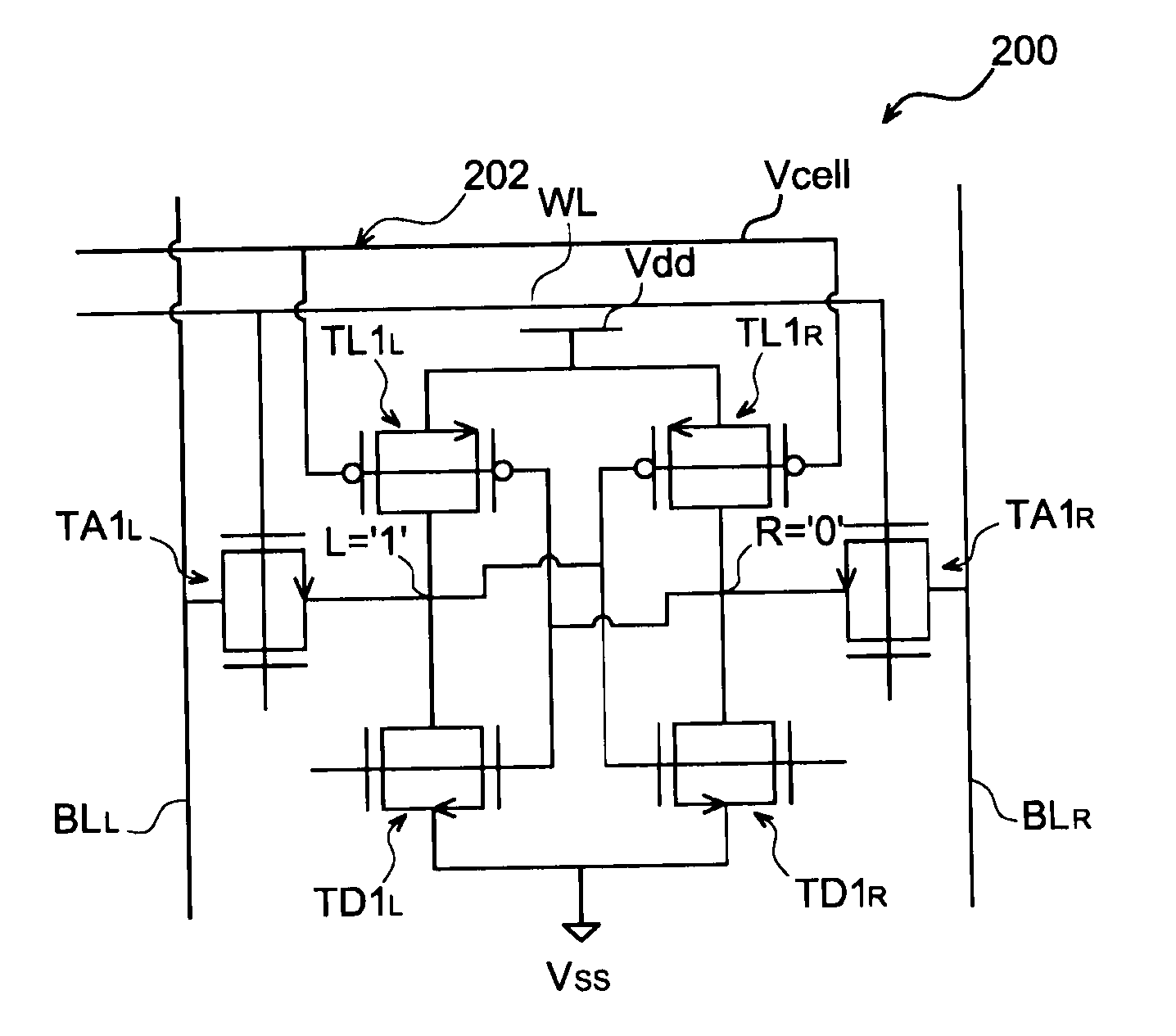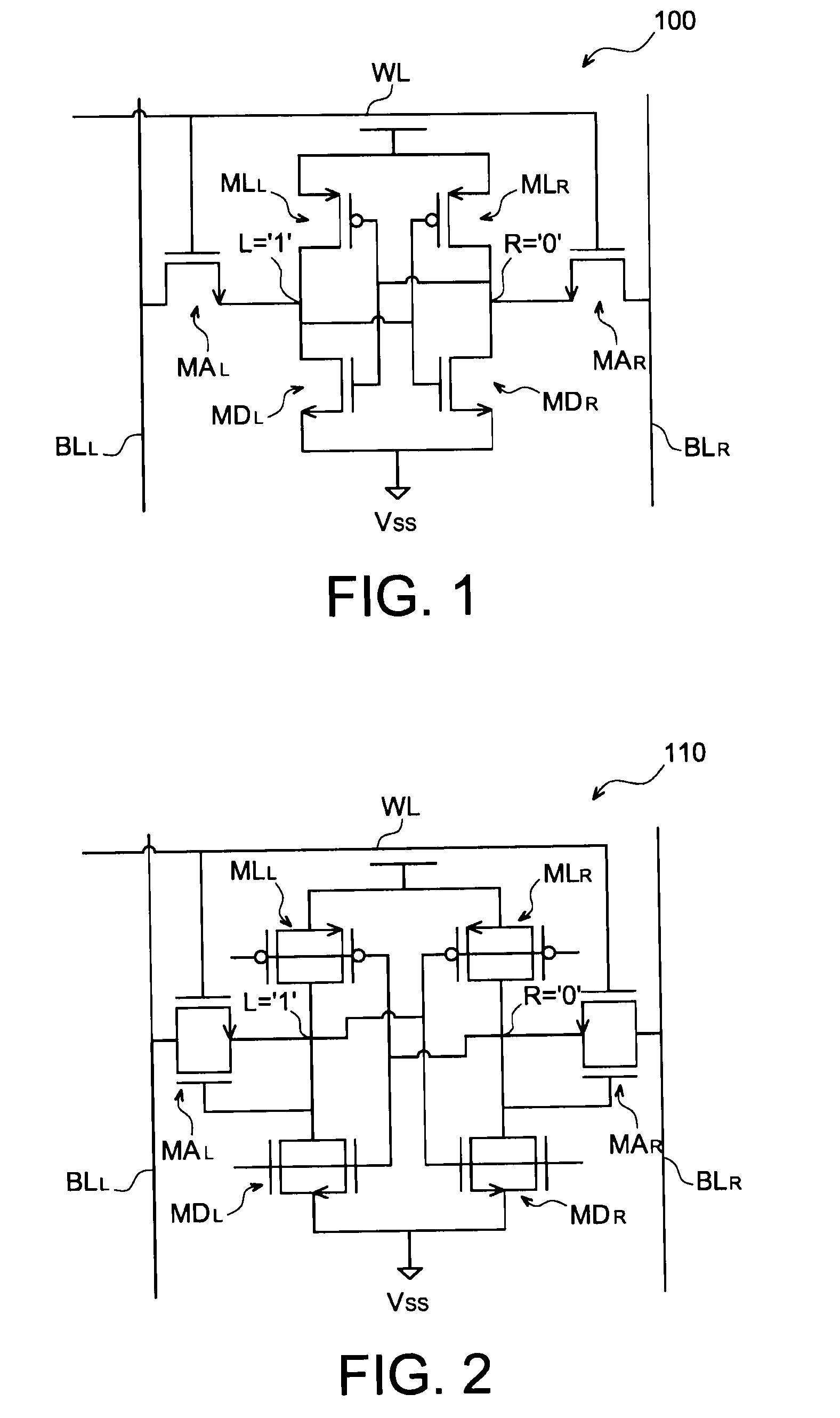SRAM memory cell with double gate transistors provided with means to improve the write margin
a memory cell and double gate technology, applied in the field of sram memory cells, can solve the problems of increasing the difficulty of achieving a good compromise between these two factors, affecting the read stability of the memory cell formed of the transistor, and affecting the design of the memory cell in relation to the intended application
- Summary
- Abstract
- Description
- Claims
- Application Information
AI Technical Summary
Benefits of technology
Problems solved by technology
Method used
Image
Examples
Embodiment Construction
[0104]FIG. 8 gives an example of cell 200, with transistors (or > cell) of a memory of SRAM type. The cell 200 is formed of transistors fabricated using MOS technology (Metal Oxide Semi-conductor) and with double gate.
[0105]The cell 200 is provided with a first access transistor TA1L with double gate, and a second access transistor TA1R with double gate, which can be fabricated using a first given type of MOS technology, for example NMOS technology.
[0106]The first access transistor TA1L depending on the manner in which it is polarized, is designed to allow access or to block access to a first storage node L intended to hold given logic data, for example logic ‘1’. The second access transistor TA1R depending on the manner in which it is polarized, is designed to allow access or to block access to a second storage node R intended to hold logic data complementing said given logic data, for example logic ‘0’.
[0107]In this example, the two gates of the first access transistor TA1L and of...
PUM
 Login to View More
Login to View More Abstract
Description
Claims
Application Information
 Login to View More
Login to View More - R&D
- Intellectual Property
- Life Sciences
- Materials
- Tech Scout
- Unparalleled Data Quality
- Higher Quality Content
- 60% Fewer Hallucinations
Browse by: Latest US Patents, China's latest patents, Technical Efficacy Thesaurus, Application Domain, Technology Topic, Popular Technical Reports.
© 2025 PatSnap. All rights reserved.Legal|Privacy policy|Modern Slavery Act Transparency Statement|Sitemap|About US| Contact US: help@patsnap.com



